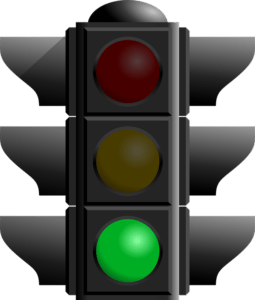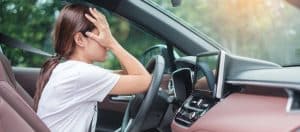As drivers, we often use signals when it isn’t actually necessary. The most basic rule drivers should remember when it comes to signalling is that drivers are meant to signal only to warn and assist fellow drivers. There are all types of road users, ranging from motor vehicle operators, cyclists, and pedestrians, so it essential for all parties to be aware of the rules and regulations of signal usage as indicated in the Highway Code.
Most motorists believe the most straightforward and general way to signal is through their indicators, even if they do so incorrectly. Furthermore, there are numerous ways to communicate intentions appropriately that actually make much more practical sense. These types of indications include: direction indicators, brake lights, flashing headlights, reverse lights, horn, and hazard warning lights.
Of the many ways drivers indicate incorrectly, one of the most obvious instances is through poor timing. Timing really can be everything when indicating on the roads about certain intentions, and is amazing when done in an appropriate amount of time. This allows fellow drivers the chance to have plenty of time to react to driver’s intentions in whatever way necessary. Also, this type of thinking ensures that the driver is allowing themselves plenty of time to complete their manoeuvre in a safe and effective manner. How the driver decides to signal should be very clear, so it is important to avoid signals that could be deemed confusing to other drivers. Whether the driver is passing a parked car near a junction or approaching a roundabout, drivers can become confused if the driver isn’t using the proper protocol for signalling their next move. This also includes not signalling at all.
As a driver, it is important to realise that there will be moments when other motorists give off signs they don’t intend to. Sometimes drivers may not realise they have left an indicator on or are braking for an unnecessary reason. This is why it is so essential to be fully aware of surroundings and that fellow drivers may be unintentionally misleading. When approaching situations that could be confusing, it is important to only do so after scrutinising whether a driver is intending to carry out what they’re indicating or if it is just a mistake. Always approach these situations with caution as to avoid a possible collision.
There are certain moments while driving where it will be a necessary to emphasise direction indicator signals and/or stop lights on the vehicle. This is easily carried out through the use of hand and arm signals, which are available in the Highway Code. Again, these signals are pointless if they are not used in an appropriate amount of time and done properly. This is when it is essential to be sure of when and what arm signals to use and that the arm signal is completely visible to other drivers. While these signals may not typically be used by motorist, drivers should remember that horse riders and cyclists will be reliant on these type of communication strategies when ever they are on the roadway.
Another important type of signal usage that many motorists are reliant on are flashing headlights. Many drivers get confused for when is the appropriate time to use their flashing lights. This is a type of signal that is regularly employed by motorist that may actually not be shown in the Highway Code. In saying this, it is important to note that flashing lights are meant to warn of the driver’s presence, and should not be used to signal that fellow motorists can safely proceed or turn. If a driver flashes their headlights at a fellow driver, it is important to recognise who the signal was intended for. It is essential to never assume anything on the motorway, and while we shouldn’t ignore this signal, it is always acceptable to properly observe the surroundings before acting. An appropriate time for drivers to use their flashing lights may be when they are on a road that is difficult to hear their horn, so it can be a good option to turn on their flashing lights or if the driver is behind someone who is unaware of their presence.
Warning other drivers may be a necessary when on the roadways. One of the best ways to do this is by using the horn. This is a great way to allow others to know of the driver’s presence. There are going to be multiple situations where the use of the horn is essential to warning fellow drivers. For example, a motorist may want to use their horn for when a person is driving forward or backward into their lane. Also, there are two worthy mentions of when horn usage has legal implications. It is actually illegal to use a horn if the driver is stationary and between the hours of 23:30 and 07:00 in a well populated area like most of Brentwood.




